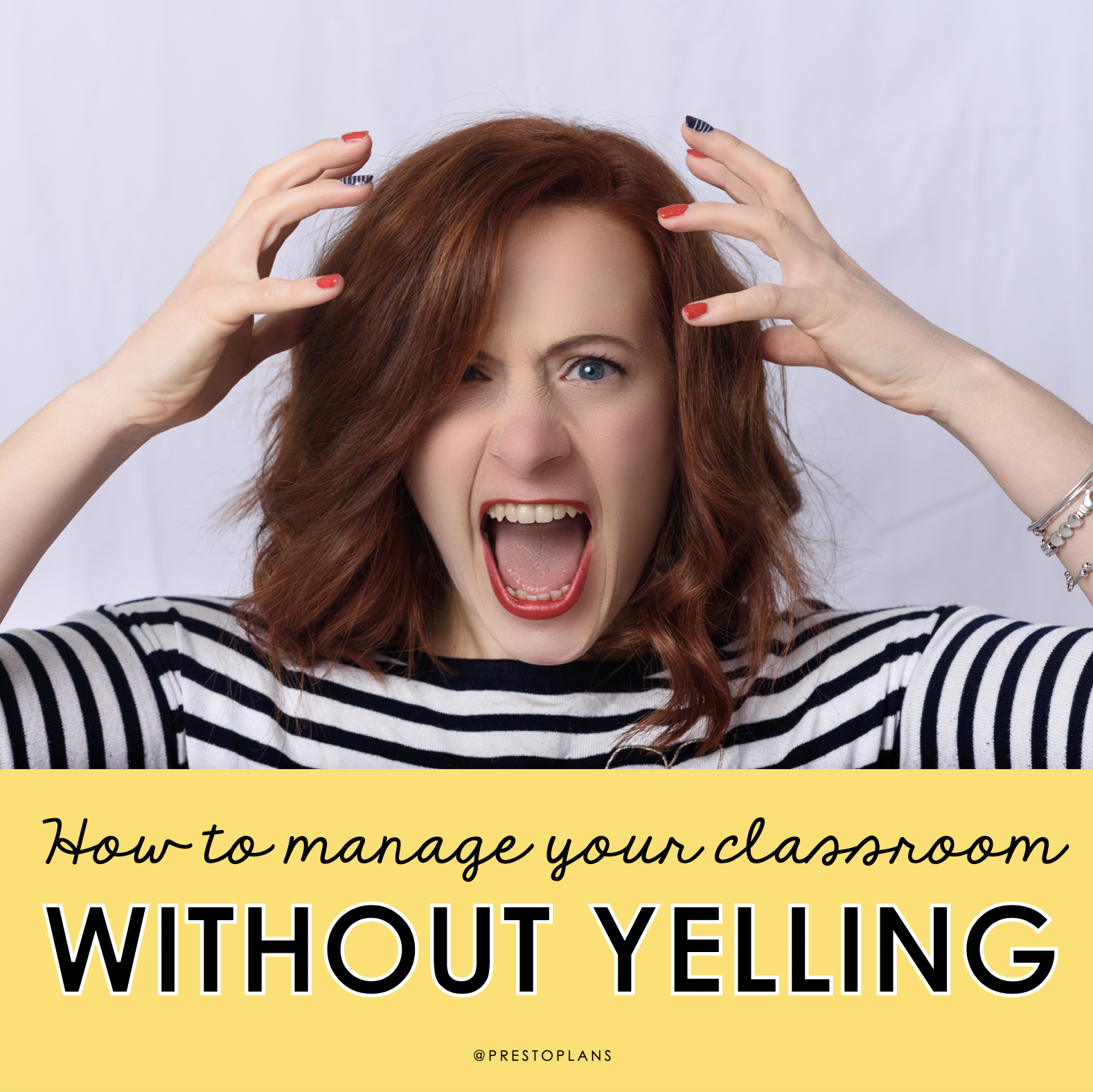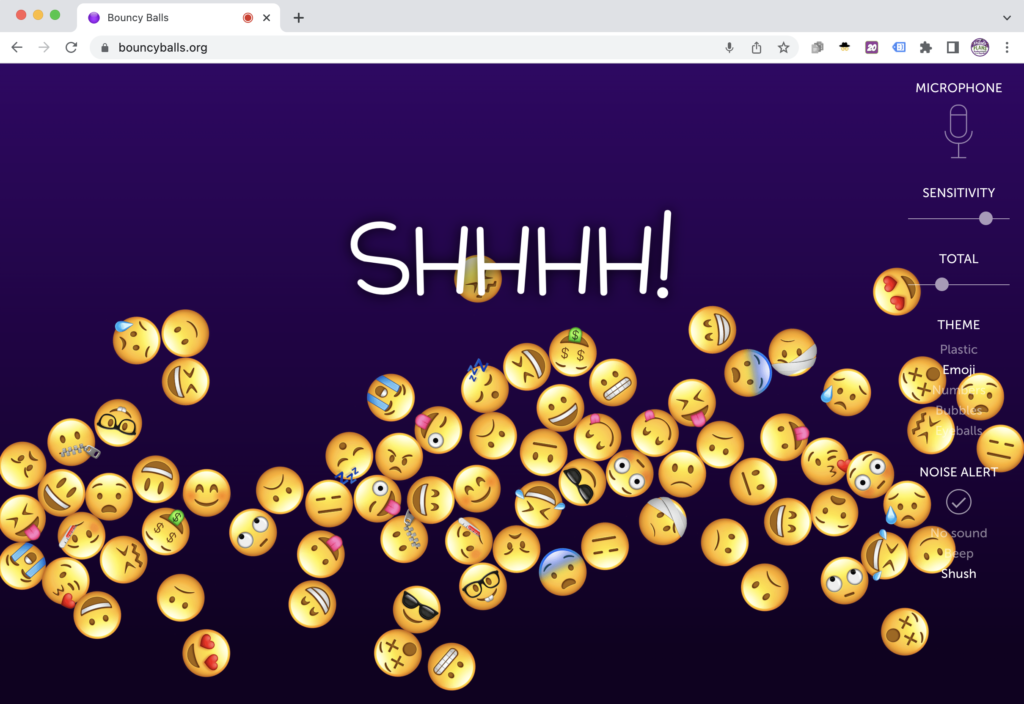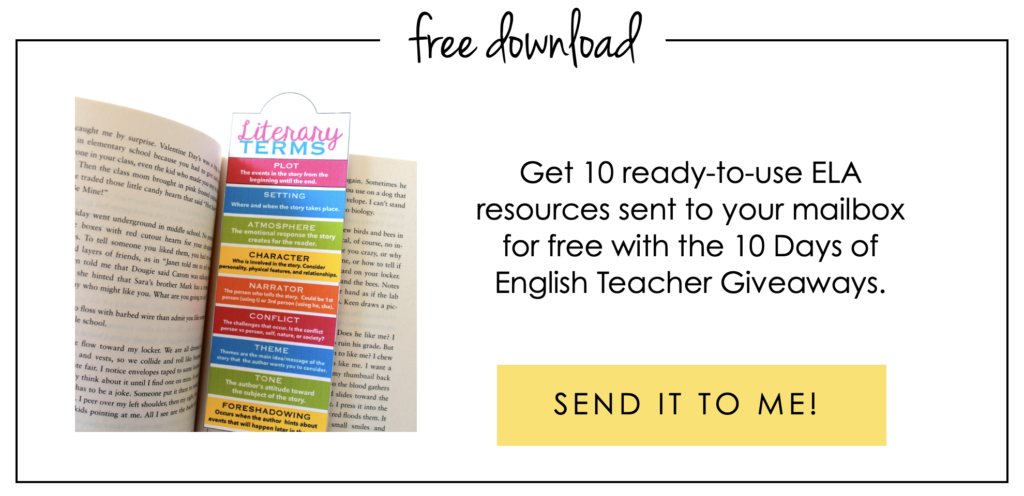PRESTO PLANS
Sent straight to your inbox
CLICK HERE TO ACCESS
Sign up to receive 10 ready-to-use ELA resources your students will love!
10 FREE ELA RESOURCES

How to Manage Your Classroom Without Yelling at Your Students
We’ve all been there. You’re standing in front of the classroom, calmly asking students to take out their notebooks, or whatever it may be, and you’re being completely ignored. Then, you start talking over the students, repeating what you said but a little louder and more emphatically this time. Before you know it, your emotions take over, and you suddenly become so frustrated! You turn into this person that you aren’t, and you find yourself yelling at your students...
I’m sure this experience I’m describing is familiar to you. I know it’s familiar to me. Have I yelled at my students in the past? Yes. Was it effective? No. Although it is often a completely understandable response, yelling at students is not an effective classroom management strategy. I thought it might be helpful to share some ideas that can help us understand why we do this, why it doesn’t work, and what we can do better to make our lives—and our students’ lives—easier.
How did you get there?
The first order of business when thinking about how to stop yelling at your students for good is reflecting on how you got there in the first place. What makes you yell? Is it when your students aren’t listening? Is it when students are distracted (maybe on their phones)? Or when they are talking when they shouldn’t be? For me, it was usually when I was trying to get their attention and they were talking over me or in their own world, not listening to a thing that I was saying.
After identifying what your triggers are, you can then think of what the process looks like. Do you go from 0-100 immediately, or are there some clues and signs you can look for that suggest you might be on your way to yelling to that level of frustration? Maybe your breathing pattern starts to change or you just feel overwhelmed. It’s important to identify this pattern in order to interrupt it.
Teachers yell when their other strategies and tools for classroom management have failed. Instead of just continuing to yell, we need to rethink those classroom management strategies. How can we adapt our classroom management systems to prevent us from getting to this point?
Why Yelling is Not an Effective Tool
If you’re continuing to yell regularly, you know it’s not effective because it means that students are continuing with the behavior that’s causing you to yell. Although it can be hard at times, much of this comes down to the challenge of controlling our own emotions in response to this unwanted behavior. Doing so is easier said than done, but it’s crucial because yelling is not an effective tool for these, and many more, reasons:
- It’s Not Good Modelling: When we yell at our students, we are subconsciously telling them that this is an acceptable way to deal with their emotions when they’re frustrated. If you yell at your class, you can’t really be upset with them if they yell out of frustration too.
- They Will Tune You Out Over Time: Another reason why yelling at our students is ineffective is because it is just a temporary fix. Over time, if this becomes a regular thing, students will just learn to tune you out when you start to raise your voice, and it will have the opposite of the intended effect.
- It Diminishes Your Impact: If you make yelling at your students a habit, their perception of you as the calm and effective leader of the classroom might start to wane, diminishing the overall impact you have on them in the classroom.
Now that we’ve discussed why we yell and why it’s not an effective classroom management tool, it’s time to talk about what we can do instead!
What you can do instead
We discussed the importance of knowing our triggers. Once we’ve identified these and have reflected on how we get from a state of calmness to yelling, we draw on a number of techniques to prevent getting to that point. For example, you might respond to these triggers by taking a deep breath. Or you might repeat a calming sentence to yourself like “keep it together” or “model good communication skills.”
You can even make a point to just take a minute whenever you can feel this happening where you stop talking altogether and reorient yourself toward a more desired reaction. Here are some alternative classroom management strategies that can help in these moments.

NEVER TALK OVER YOUR STUDENTS
It can be a good idea to establish a rule for yourself that you will never talk over your students. This is hard to follow through on—trust me, I know. However, there’s a direct path between talking over students and yelling at them. If you hear yourself starting to do this, you can make a point to be quiet and wait (or use some of the following strategies) to get their attention. If you just talk over students, you risk teaching them that it is ok for them to talk amongst each other when you are speaking to the class.
SPEAK CALMLY
On a similar note, there is natural a tendency to want to go louder when students are talking, but it is way more effective to speak softly and calmly in these moments. Although it feels counterintuitive, if we bring our voices down to a whisper, students will often match our energy.
QUIETLY DISCIPLINE
If there is one student in particular who is being disruptive, you can calmly approach them calmly and speak to them directly, in a quiet voice. This works more than you might think. Yelling at one student in front of the rest of the class doesn’t get us anywhere.
COUNTDOWN
Sometimes it can be effective to do a countdown when students are being rowdy. Let them know you are going to count down from 10, and that once you get to 1, you expect them to be settled down. I know it seems silly, but more often than not, students will indeed quiet down by the time you get to one. It also provides students the opportunity to say the last-minute thing to their friends and end the conversation. This is especially useful when you are transitioning from a class activity back to instruction.
HAVE VISUAL / AUDITORY CUES
Another strategy you can use is having visual and auditory cues on hand in anticipation of (and to prevent) things from getting out of control. You can use a visual cue that shows the loudness of the room, like bouncyballs, which displays various colorful balls on your board that bounce increasingly as the sound level in the room rises using the microphone on your computer. They even have different options (like emojis) that are sure to get your students’ attention and an option for a “shush” or “beep” to sound when the noise level in the classroom gets too high.
Visual cues could also be as simple as turning off the lights when students get too loud. Or you could use auditory cues like a bell—or anything that produces a distinct sound (such as an alarm)—that goes off when the class is too rowdy.

CALL AND RESPONSE
A call and response is when the teacher says one thing and the students have a response. In elementary, this often takes the form of the teacher saying something like “class class” and the students responding with “yes yes.” Although this might initially seem silly to use at higher grade levels, it can be adapted to work for middle and high school.
We can do this by making the call and responses we use funny and personalized to your group. For example, you might use call-and-responses that are funny references to a line from a book, movie, or TV show that comes up in your class discussion sometimes. Or you can use any inside jokes you and your group share. You can also just say “Marco” and have them repeat “Polo!” to get everyone back on track.
FOCUS ON THOSE WHO ARE LISTENING
It’s easy to focus on the negative when a group of students is being disruptive in your class. However, it can be effective to focus on the students who are being respectful and attentive. You can win back students’ engagement by rewarding those who are listening. You might say “Sarah, thank you for listening, I appreciate it.” The other students will want the praise and, one by one, start to adapt to that behavior.

SKIP THE SPEECH
Finally, skip the speech. At least at the moment, when emotions are still running high, avoid going into a long-winded lecture about it. If you must give a speech, keep it short and sweet, and even then, consider waiting until the next day. You can just say something like “I really want this classroom to have a better environment. Yesterday we had a bit of a hiccup with that. Here’s what we’re going to do moving forward.” This gets the message across, and your students will understand what went wrong.
There you have it! I hope you find these tips helpful. If you’re interested in checking out more teaching tips and resources, you can click here.

Search the blog for what you are teaching
GIVEAWAYS
sent straight to your inbox!
share this post